Are you planning a trip to Sapa, Vietnam, and wondering what makes Ta Van village so special? Ta Van village is renowned for its stunning landscapes, unique cultural experiences, and the warm hospitality of its ethnic communities. SIXT.VN offers seamless travel solutions, ensuring you experience the best of Sapa, from convenient airport transfers to comfortable hotel bookings, making your cultural exploration smooth and enjoyable.
1. What Makes Ta Van Village a Must-Visit Destination in Sapa?
Ta Van Village is a must-visit destination in Sapa due to its cultural richness, stunning landscapes, and unique trekking opportunities. Located about 10 kilometers from Sapa town, Ta Van offers an authentic glimpse into the lives of the local ethnic minorities, primarily the Giay, Hmong, and Red Dao. According to the Sapa Tourism Office, the village attracts thousands of tourists each year, eager to experience its serene beauty and cultural diversity. Exploring Ta Van means immersing yourself in a world of vibrant traditions, breathtaking rice terraces, and warm hospitality, making it an unforgettable experience.
1.1. Cultural Significance of Ta Van Village
Ta Van is a melting pot of cultures, primarily inhabited by the Giay, Hmong, and Red Dao ethnic groups. Each group maintains its unique traditions, clothing styles, and languages, providing a rich tapestry of cultural experiences for visitors. The Giay people, with their distinct customs and traditional stilt houses, offer a fascinating insight into their way of life. The Hmong, known for their intricate indigo-dyed clothing and skilled craftsmanship, add to the village’s vibrant atmosphere. Meanwhile, the Red Dao, with their elaborate headwear and herbal remedies, bring a unique perspective to the cultural landscape.
1.2. Natural Beauty and Landscapes
The landscapes surrounding Ta Van are nothing short of breathtaking. The village is nestled in the Muong Hoa Valley, renowned for its terraced rice paddies that cascade down the hillsides, creating stunning visual patterns. The Hoang Lien Son mountain range provides a majestic backdrop, enhancing the village’s serene and picturesque setting. Trekking through these landscapes offers panoramic views and an opportunity to connect with nature.
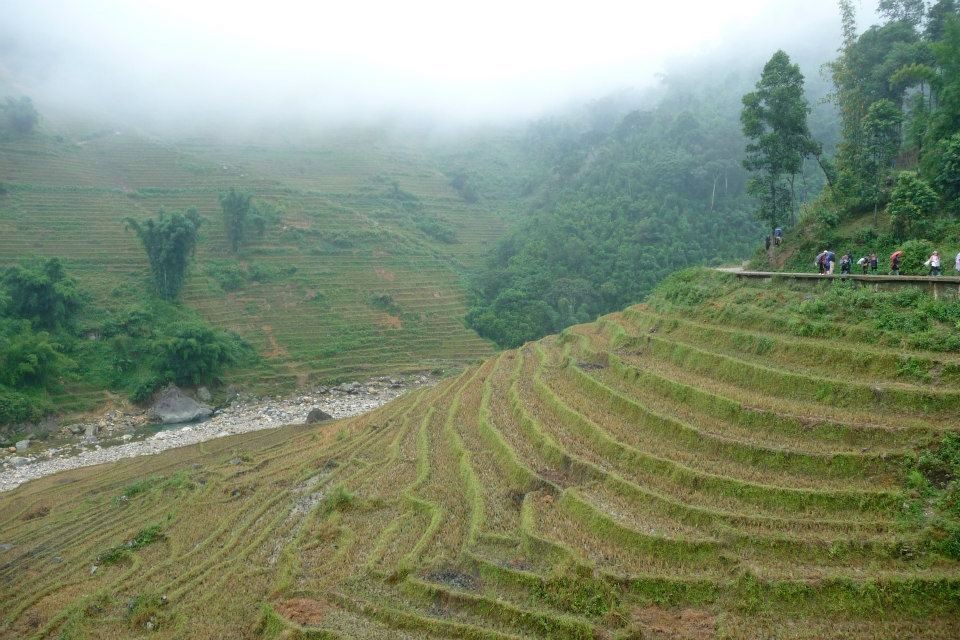 Terraced rice paddies in Sapa
Terraced rice paddies in Sapa
1.3. Unique Trekking and Hiking Opportunities
Ta Van is a popular starting point for various trekking routes that cater to different fitness levels. Whether you prefer a leisurely walk through the rice fields or a challenging hike up the mountains, there’s a trail for everyone. These treks offer an immersive experience, allowing you to interact with the local communities, learn about their traditions, and appreciate the natural beauty of the region.
1.4. Authentic Local Experiences
What sets Ta Van apart is the opportunity to experience authentic local life. Visitors can stay in traditional homestays, savor local cuisine, and participate in cultural activities such as weaving, dyeing, and farming. This immersive experience provides a deeper understanding of the local culture and creates lasting memories.
1.5. Proximity to Other Attractions
Ta Van’s strategic location makes it an ideal base for exploring other attractions in Sapa. Nearby villages like Cat Cat and Lao Chai are easily accessible, each offering unique cultural and natural attractions. The famous Fansipan peak, the highest in Indochina, is also within reach for those seeking a more adventurous experience.
2. Which Ethnic Groups Inhabit Ta Van Village?
Ta Van Village is primarily inhabited by the Giay, Hmong, and Red Dao ethnic groups, each contributing to the village’s diverse cultural tapestry. According to a survey by the Vietnam National Museum of Ethnology, the Giay people constitute the largest ethnic group in Ta Van, followed by the Hmong and Red Dao. This blend of cultures creates a vibrant and unique atmosphere, making Ta Van a fascinating destination for cultural enthusiasts.
2.1. The Giay People
The Giay people are known for their distinct language, traditional stilt houses, and unique customs. They have a rich cultural heritage that includes traditional songs, dances, and festivals. The Giay community in Ta Van has preserved their traditions through generations, offering visitors a glimpse into their unique way of life.
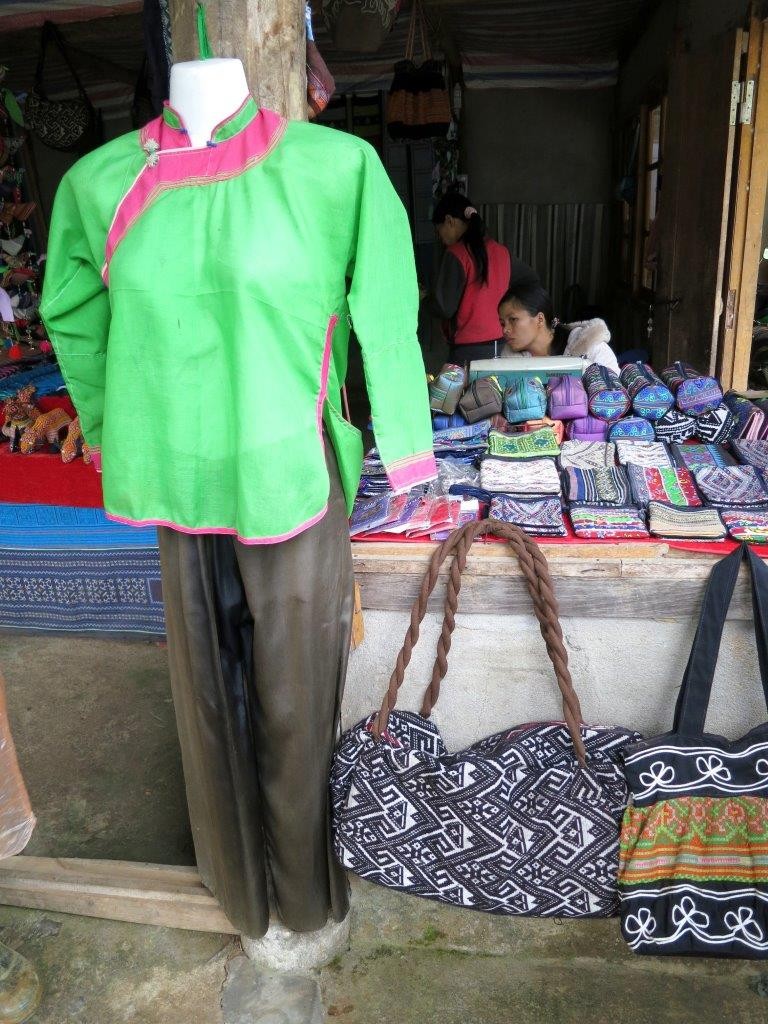 Giay costume
Giay costume
2.1.1. Traditional Stilt Houses
The Giay people are known for their traditional stilt houses, which are not only a distinctive architectural feature but also a practical solution for living in the mountainous terrain. These houses are elevated above the ground, protecting them from floods and wild animals. The space beneath the house is often used for storage or as a shelter for livestock.
2.1.2. Cultural Practices and Festivals
The Giay people have a rich cultural heritage that includes traditional songs, dances, and festivals. One of the most important festivals is the Roong Pooc festival, celebrated after the Lunar New Year to pray for good weather, abundant harvests, and prosperity. This festival is a vibrant display of Giay culture, featuring traditional music, dances, and games.
2.2. The Hmong People
The Hmong are one of the largest ethnic minority groups in Vietnam, known for their skilled craftsmanship, distinctive clothing, and vibrant culture. In Ta Van, the Hmong community is primarily Black Hmong, recognized by their indigo-dyed clothing made from hemp. The Hmong women are skilled weavers and embroiderers, creating intricate patterns on their traditional costumes.
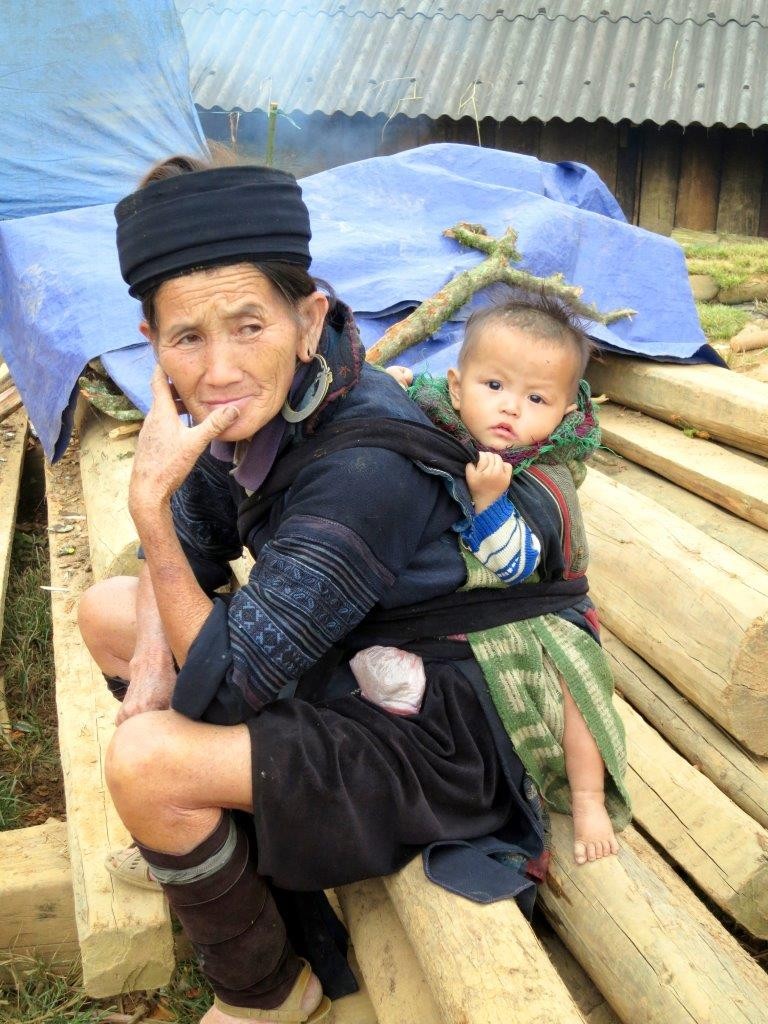 Hmong mother with baby
Hmong mother with baby
2.2.1. Indigo Dyeing and Hemp Weaving
The Hmong people are renowned for their indigo dyeing and hemp weaving skills. They grow hemp from seed and use natural indigo dye to create the distinctive bluish-black color of their clothing. The process is labor-intensive, involving multiple steps from harvesting the hemp to weaving and dyeing the fabric.
2.2.2. Traditional Clothing and Crafts
Hmong clothing is not only functional but also a form of artistic expression. The women create intricate patterns using embroidery and batik techniques, each design carrying symbolic meaning. These crafts are not only a source of income for the Hmong community but also a way to preserve their cultural heritage.
2.3. The Red Dao People
The Red Dao are easily recognizable by their elaborate red headwear, shaved heads (for women after marriage), and intricate silver jewelry. They have a rich tradition of herbal medicine and are known for their hospitality. The Red Dao community in Ta Van has maintained their unique customs and traditions, contributing to the village’s cultural diversity.
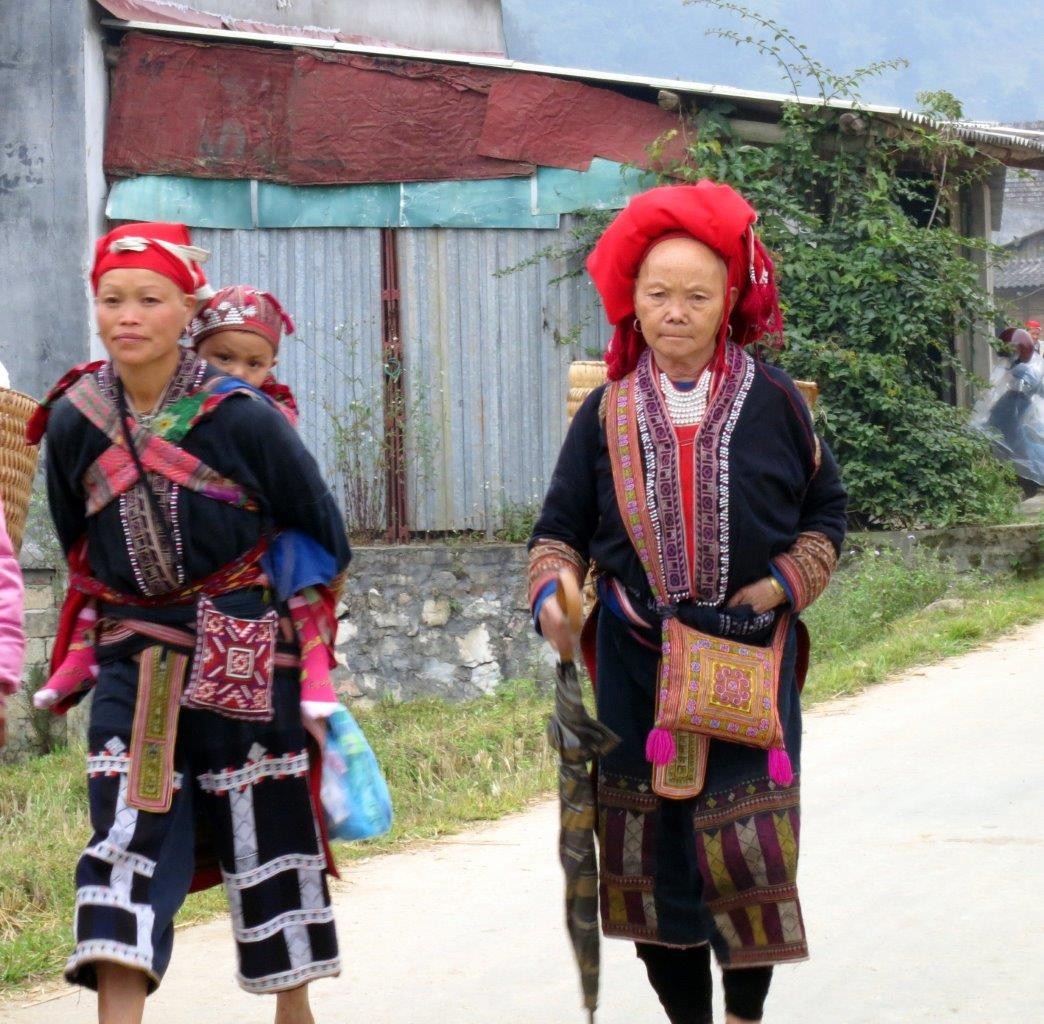 Red Dao
Red Dao
2.3.1. Herbal Medicine and Traditional Practices
The Red Dao people have a deep knowledge of herbal medicine, using plants and herbs to treat various ailments. They are also known for their traditional practices such as herbal baths, which are believed to have therapeutic benefits. Visitors to Ta Van can experience these traditional practices, gaining insight into the Red Dao’s holistic approach to health and wellness.
2.3.2. Unique Customs and Traditions
The Red Dao have unique customs and traditions that set them apart from other ethnic groups. One of the most distinctive is the practice of shaving the heads of married women, symbolizing their transition into adulthood. They also have elaborate wedding ceremonies and funeral rituals that reflect their spiritual beliefs and cultural values.
3. What Activities Can You Enjoy in Ta Van Village?
In Ta Van Village, you can immerse yourself in a range of activities, from trekking through stunning rice terraces to experiencing the local culture firsthand. According to TripAdvisor, many travelers recommend spending at least two to three days in Ta Van to fully appreciate its beauty and cultural richness. Whether you’re an adventure seeker or a culture enthusiast, Ta Van offers something for everyone.
3.1. Trekking and Hiking
Trekking and hiking are the most popular activities in Ta Van, offering breathtaking views of the surrounding landscapes. The trails wind through terraced rice paddies, along streams, and up hillsides, providing a diverse and immersive experience.
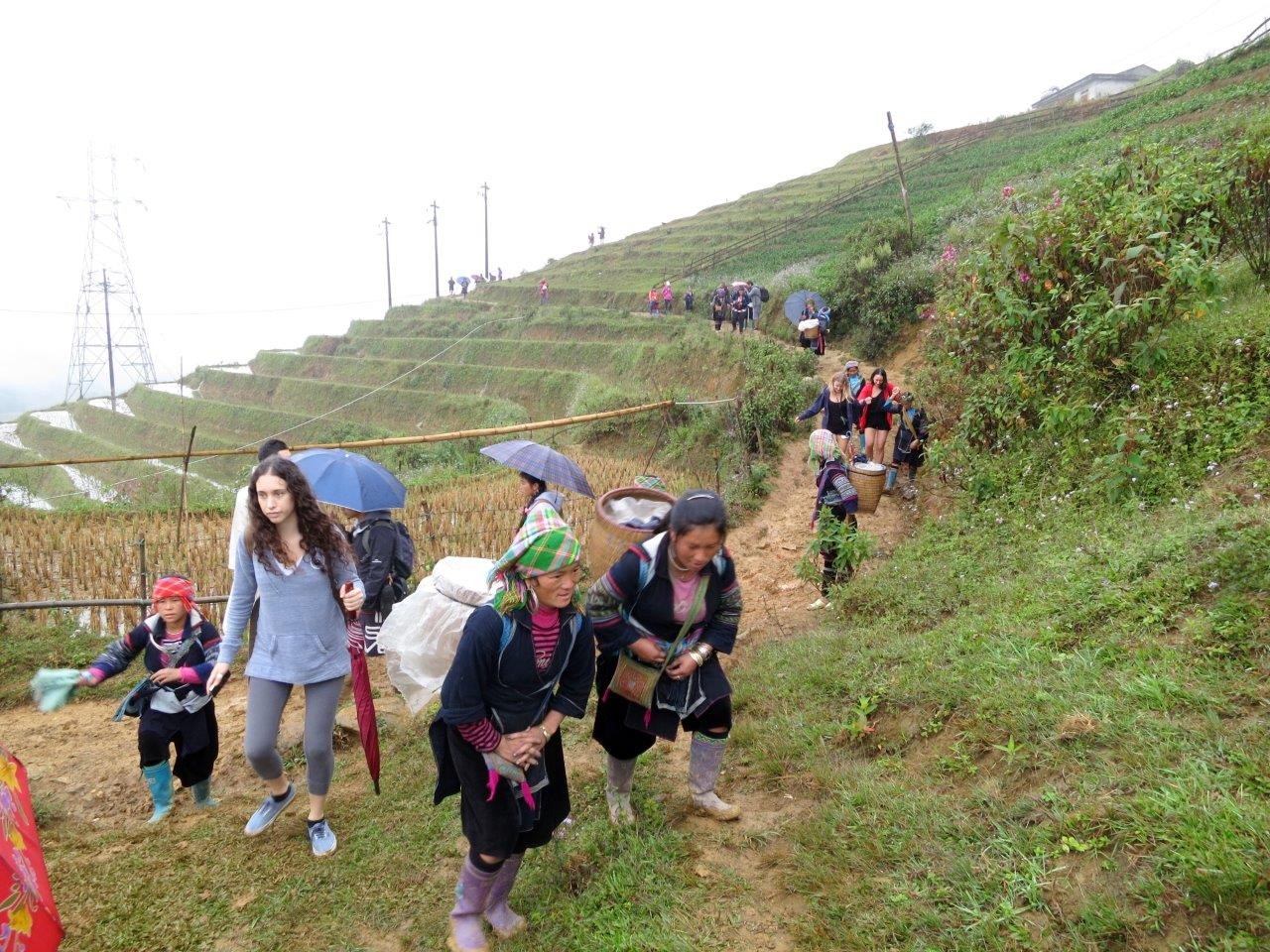 Hiking Ta Van
Hiking Ta Van
3.1.1. Guided Tours
Many local guides offer trekking tours that provide insights into the local culture and history. These guides can lead you to hidden gems, share stories about the local communities, and ensure you have a safe and enjoyable experience.
3.1.2. Self-Guided Hikes
For those who prefer to explore at their own pace, self-guided hikes are also an option. The trails are generally well-marked, but it’s advisable to bring a map and be prepared for varying weather conditions.
3.2. Cultural Immersion
Cultural immersion is a key highlight of visiting Ta Van. You can stay in traditional homestays, participate in local activities, and learn about the customs and traditions of the Giay, Hmong, and Red Dao people.
 Typical village house
Typical village house
3.2.1. Homestays
Staying in a homestay provides an authentic glimpse into the daily lives of the local people. You can share meals with the family, learn about their farming practices, and participate in traditional activities such as weaving and cooking.
3.2.2. Local Markets
Visiting the local markets is a great way to experience the vibrant culture of Ta Van. You can find a variety of local products, including handicrafts, textiles, and fresh produce. It’s also an opportunity to interact with the local people and learn about their traditional trading practices.
3.3. Photography
Photography enthusiasts will find Ta Van a paradise, with its stunning landscapes, colorful ethnic costumes, and unique cultural scenes. The terraced rice paddies, especially during the planting and harvesting seasons, offer incredible photo opportunities.
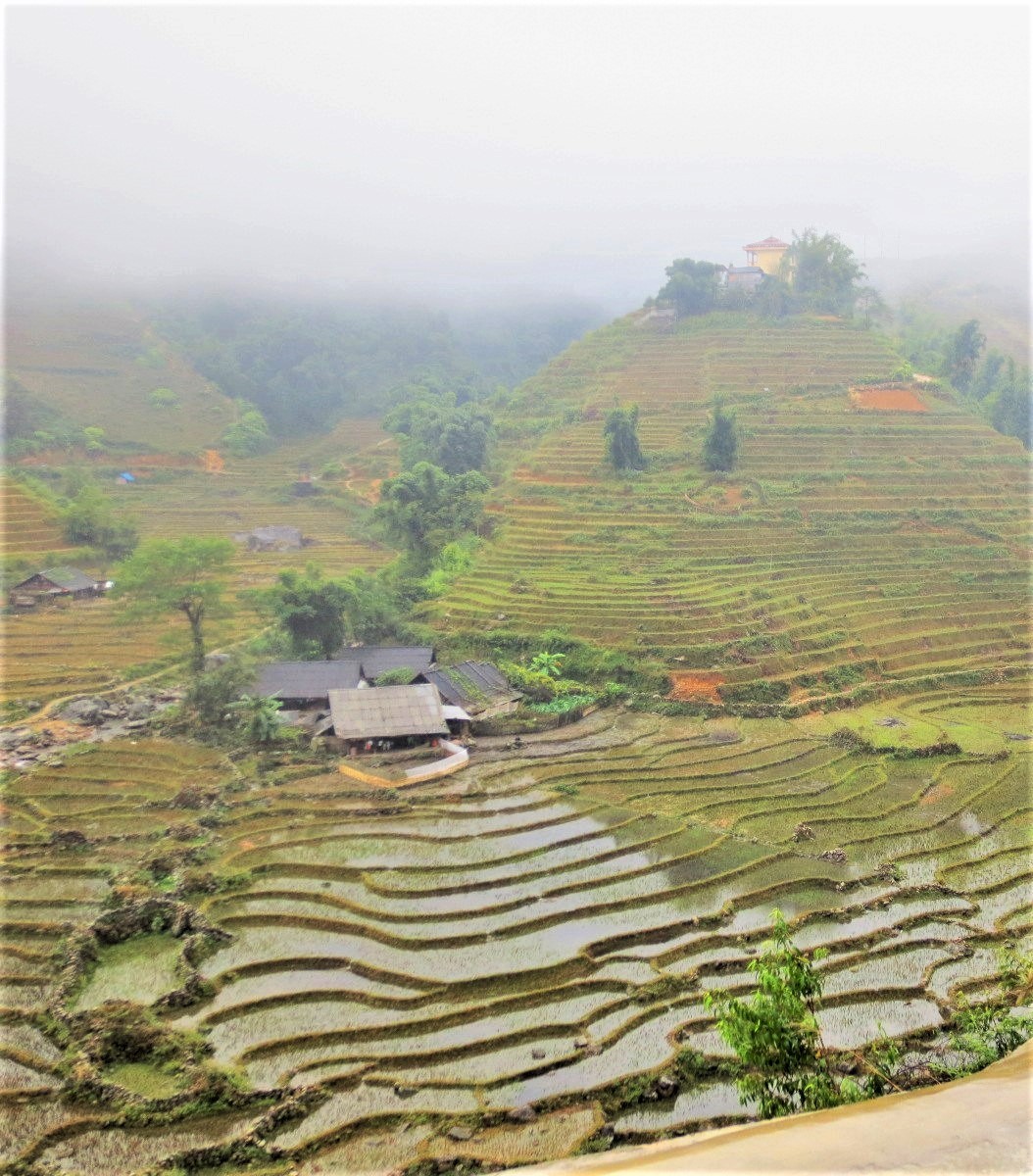 Scenic rice terraces
Scenic rice terraces
3.3.1. Best Times for Photography
The best times for photography are during the early morning and late afternoon when the light is soft and golden. The planting season (April-May) and the harvesting season (September-October) are particularly scenic, with the rice paddies transforming into a sea of green or gold.
3.3.2. Capturing Local Life
Beyond the landscapes, capturing the daily life of the local people can be equally rewarding. Ask for permission before taking photos of people, and be respectful of their customs and traditions.
3.4. Relaxation and Wellness
For those seeking relaxation and wellness, Ta Van offers a tranquil escape from the hustle and bustle of city life. You can enjoy a traditional Red Dao herbal bath, practice yoga amidst the rice terraces, or simply unwind and soak in the serene atmosphere.
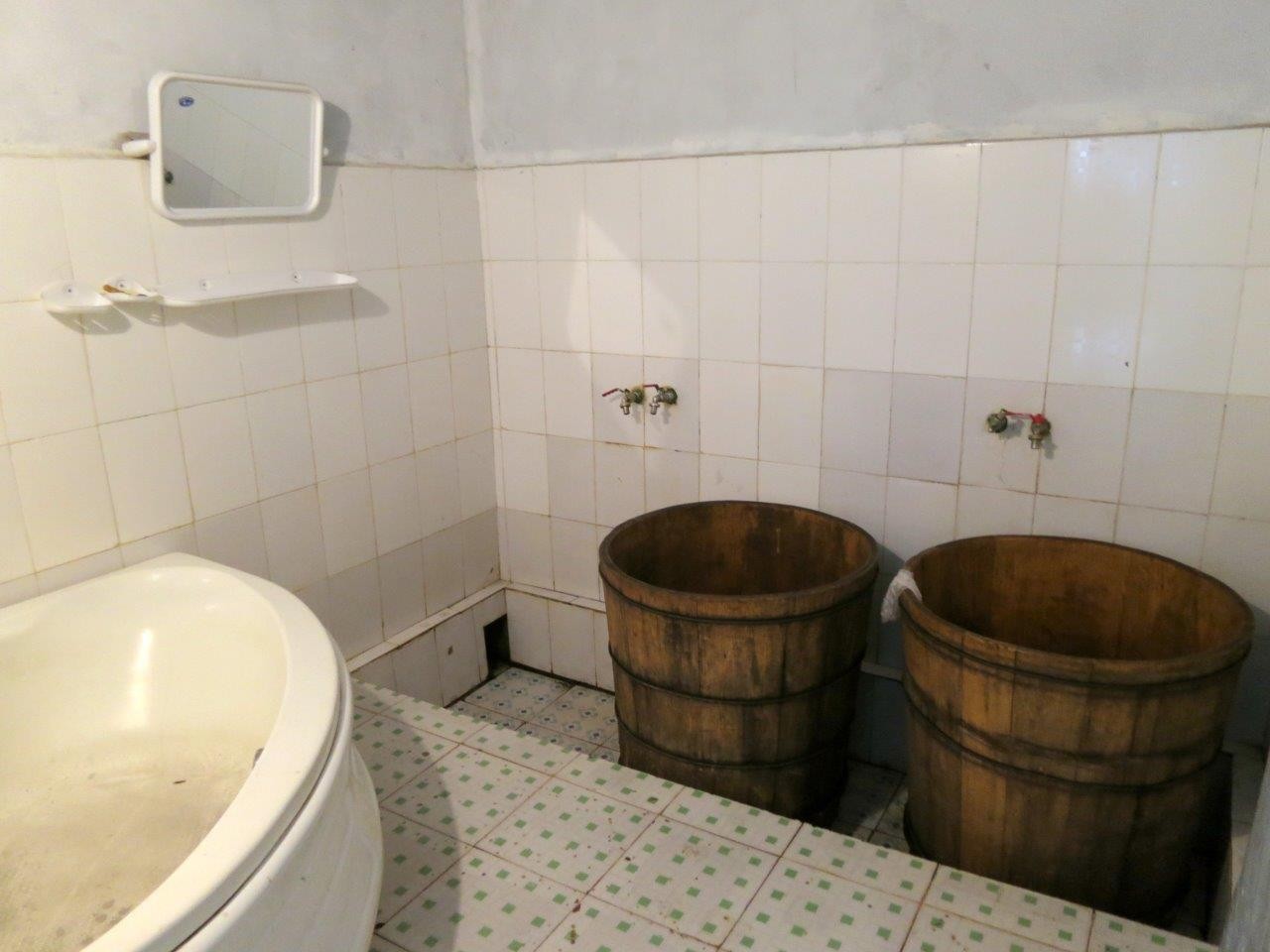 Red Dao herbal bath
Red Dao herbal bath
3.4.1. Herbal Baths
The Red Dao are known for their herbal baths, which are believed to have therapeutic benefits. These baths are prepared using a blend of local herbs and plants, and are said to relieve muscle pain, improve circulation, and promote relaxation.
3.4.2. Yoga and Meditation
The serene landscapes of Ta Van provide an ideal setting for yoga and meditation. Many homestays offer yoga classes or meditation sessions, allowing you to connect with nature and find inner peace.
4. How to Get to Ta Van Village from Sapa?
Getting to Ta Van Village from Sapa is relatively straightforward, with several transportation options available to suit different preferences and budgets. According to local travel guides, the most common ways to reach Ta Van include hiring a motorbike, taking a taxi or private car, or joining a guided trekking tour. Each option offers a unique experience, allowing you to explore the scenic route at your own pace.
4.1. Motorbike Rental
Renting a motorbike is a popular and adventurous way to get to Ta Van, offering flexibility and the opportunity to explore the surrounding areas. Several rental shops in Sapa town provide motorbikes at reasonable prices.
4.1.1. Rental Costs
The cost of renting a motorbike typically ranges from $5 to $10 per day, depending on the type of bike and the rental duration. It’s essential to check the bike’s condition and ensure it’s in good working order before renting.
4.1.2. Road Conditions and Safety
The road to Ta Van can be winding and steep in some sections, so it’s essential to have some experience riding a motorbike. Wearing a helmet is mandatory, and it’s advisable to check the weather conditions before setting off.
4.2. Taxi or Private Car
Taking a taxi or private car is a more comfortable and convenient option, especially if you’re traveling with a group or have luggage. Taxis are readily available in Sapa town, and private cars can be arranged through hotels or tour operators.
4.2.1. Cost and Convenience
The cost of a taxi or private car to Ta Van typically ranges from $15 to $25, depending on the type of vehicle and the distance. This option offers door-to-door service and allows you to sit back and enjoy the scenery without worrying about driving.
4.2.2. Booking in Advance
It’s advisable to book a taxi or private car in advance, especially during peak tourist season. This ensures you have a reliable transportation option and can negotiate the price beforehand.
4.3. Guided Trekking Tour
Joining a guided trekking tour is a popular way to reach Ta Van, combining transportation with a guided exploration of the area. Many tour operators in Sapa offer trekking tours that include transportation to and from Ta Van, as well as a knowledgeable guide who can provide insights into the local culture and history.
4.3.1. Tour Inclusions
Guided trekking tours typically include transportation, a local guide, meals, and accommodation in a homestay. These tours offer a hassle-free way to experience Ta Van and its surrounding landscapes.
4.3.2. Benefits of a Guided Tour
The benefits of a guided tour include having a knowledgeable guide who can provide insights into the local culture and history, as well as ensuring you have a safe and enjoyable experience. Guided tours also offer the opportunity to meet other travelers and share your experiences.
5. What to Pack for a Trip to Ta Van Village?
Packing for a trip to Ta Van Village requires considering the climate, terrain, and cultural sensitivities. According to travel advisories, it’s essential to pack comfortable clothing, sturdy footwear, and appropriate gear for trekking and outdoor activities. Being prepared will ensure you have a comfortable and enjoyable experience in Ta Van.
5.1. Clothing
The weather in Sapa can be unpredictable, so it’s essential to pack layers of clothing that can be adjusted to changing conditions.
5.1.1. Layers
Pack lightweight, breathable layers such as t-shirts, long-sleeved shirts, and fleece jackets. These can be easily added or removed depending on the temperature.
5.1.2. Rain Gear
Rain is common in Sapa, so it’s essential to pack a waterproof jacket or poncho. A rain cover for your backpack is also a good idea to protect your belongings.
5.2. Footwear
Sturdy footwear is essential for trekking and hiking in Ta Van.
5.2.1. Hiking Boots
Hiking boots with good ankle support and traction are ideal for tackling the rugged terrain.
5.2.2. Comfortable Shoes
Pack a pair of comfortable shoes or sandals for walking around the village and relaxing at your homestay.
5.3. Gear
Having the right gear can make your trip to Ta Van more comfortable and enjoyable.
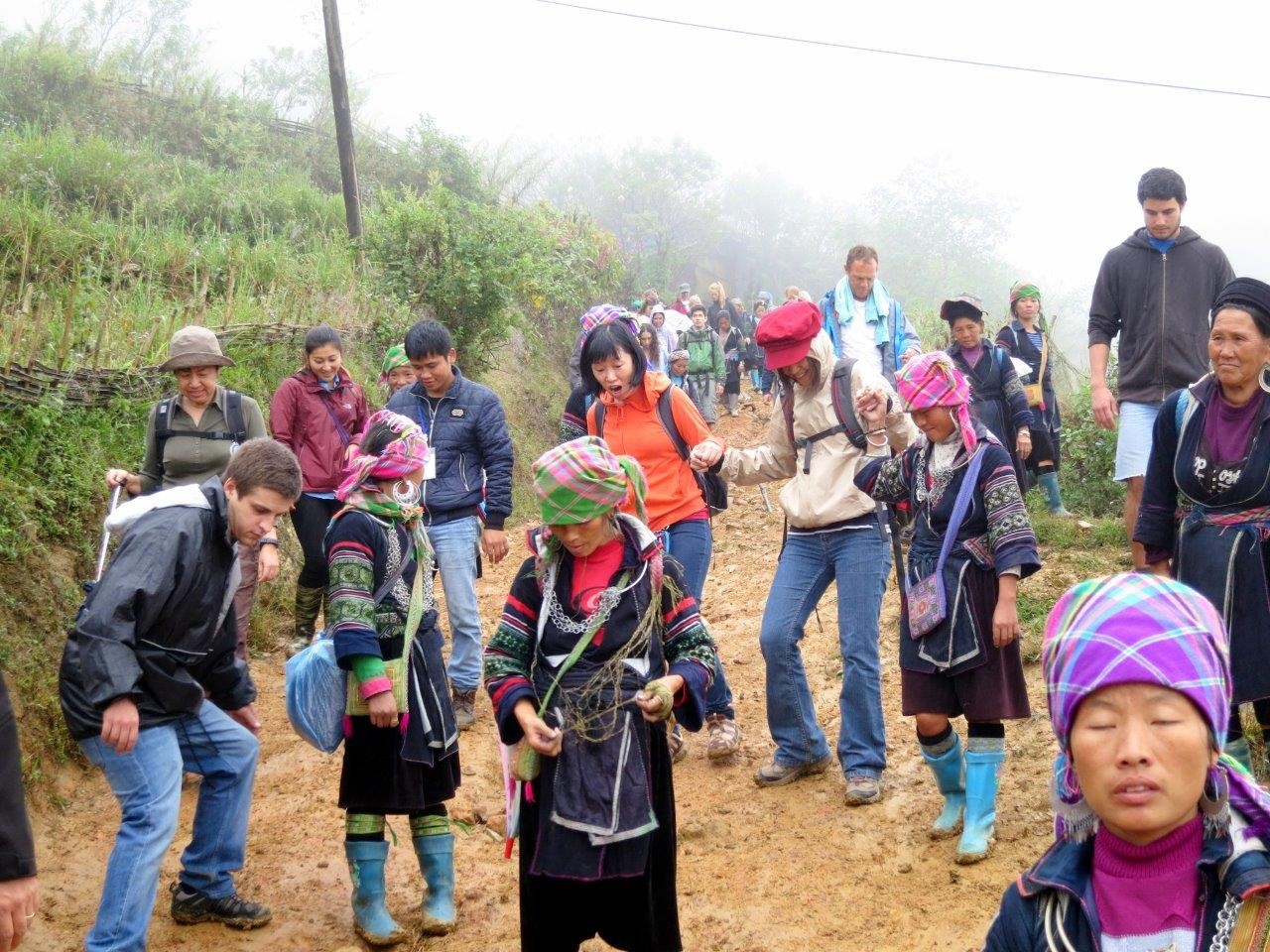 Muddy walk in Ta Van
Muddy walk in Ta Van
5.3.1. Backpack
A comfortable backpack is essential for carrying your belongings while trekking. Choose a size that’s appropriate for the length of your hike and the amount of gear you need to carry.
5.3.2. Insect Repellent
Mosquitoes and other insects can be a nuisance in Sapa, so it’s essential to pack insect repellent.
6. What Are the Accommodation Options in Ta Van Village?
Accommodation options in Ta Van Village range from traditional homestays to eco-lodges, offering a variety of experiences to suit different preferences and budgets. According to Booking.com, homestays are the most popular choice among travelers seeking an authentic cultural experience, while eco-lodges provide a more luxurious and sustainable option.
6.1. Homestays
Homestays are the most common type of accommodation in Ta Van, offering a unique opportunity to experience the local culture firsthand.
6.1.1. Authentic Cultural Experience
Staying in a homestay allows you to live with a local family, share meals, and participate in their daily activities. This provides a deeper understanding of the local culture and creates lasting memories.
6.1.2. Basic Amenities
Homestays typically offer basic amenities such as a bed, mosquito net, and shared bathroom. While they may not have all the comforts of a hotel, they provide a comfortable and authentic experience.
6.2. Eco-Lodges
Eco-lodges offer a more luxurious and sustainable accommodation option in Ta Van.
6.2.1. Sustainable Practices
Eco-lodges are committed to sustainable practices such as using renewable energy, conserving water, and supporting local communities.
6.2.2. Comfortable Amenities
Eco-lodges typically offer comfortable amenities such as private bathrooms, hot showers, and comfortable beds. They also often have on-site restaurants serving local and international cuisine.
6.3. Hotels in Sapa Town
Some visitors prefer to stay in hotels in Sapa town and take day trips to Ta Van.
6.3.1. Variety of Options
Sapa town offers a wide variety of hotels, ranging from budget-friendly guesthouses to luxury resorts.
6.3.2. Convenient Location
Staying in Sapa town provides convenient access to restaurants, shops, and other attractions.
7. What Are the Best Times to Visit Ta Van Village?
The best times to visit Ta Van Village are during the spring (March to May) and autumn (September to November) seasons, offering pleasant weather and stunning landscapes. According to weather reports, these months typically have mild temperatures, clear skies, and low rainfall, making them ideal for trekking and outdoor activities. Timing your visit right will enhance your experience and allow you to fully appreciate the beauty of Ta Van.
7.1. Spring (March to May)
Spring is a beautiful time to visit Ta Van, with blooming flowers, lush greenery, and comfortable temperatures.
7.1.1. Planting Season
The planting season (April-May) is a particularly scenic time to visit, with the rice paddies transforming into a sea of green.
7.1.2. Mild Weather
The weather during spring is mild and pleasant, with average temperatures ranging from 15°C to 25°C.
7.2. Autumn (September to November)
Autumn is another great time to visit Ta Van, with golden rice paddies, clear skies, and cool temperatures.
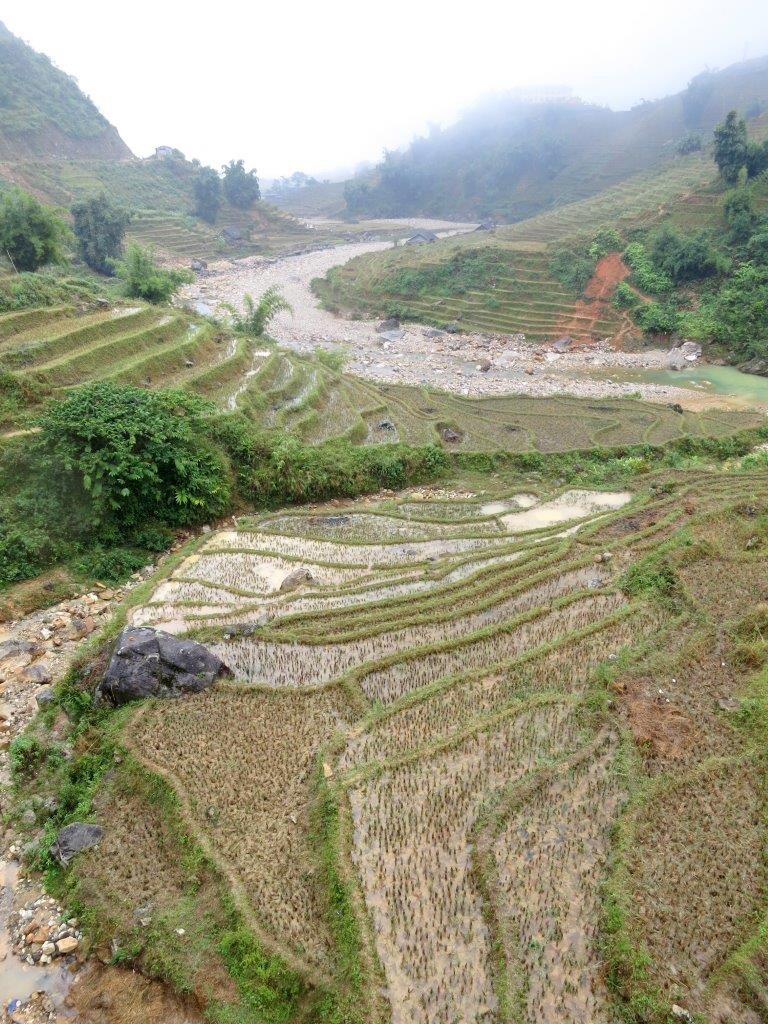 Scenic view from bridge
Scenic view from bridge
7.2.1. Harvesting Season
The harvesting season (September-October) is a particularly scenic time to visit, with the rice paddies turning golden and ready for harvest.
7.2.2. Cool Temperatures
The weather during autumn is cool and comfortable, with average temperatures ranging from 10°C to 20°C.
7.3. Considerations for Other Seasons
While spring and autumn are the best times to visit, it’s still possible to enjoy Ta Van during other seasons with proper preparation.
7.3.1. Summer (June to August)
Summer can be hot and humid, with frequent rain. However, the landscapes are lush and green, and the rice paddies are at their fullest.
7.3.2. Winter (December to February)
Winter can be cold and foggy, with occasional snow. However, the landscapes have a unique beauty, and the crowds are smaller.
8. What Local Cuisine Should You Try in Ta Van Village?
In Ta Van Village, you can savor a variety of local dishes, reflecting the unique culinary traditions of the Giay, Hmong, and Red Dao people. According to local food guides, some must-try dishes include thang co (horse meat stew), black chicken, and bamboo sticky rice. Exploring the local cuisine is an essential part of experiencing the culture of Ta Van.
8.1. Thang Co (Horse Meat Stew)
Thang co is a traditional Hmong dish made from horse meat, offal, and various spices.
8.1.1. Unique Flavor
Thang co has a unique and savory flavor, with a combination of meat, herbs, and spices that create a warming and satisfying dish.
8.1.2. Cultural Significance
Thang co is often served at special occasions and festivals, reflecting its cultural significance to the Hmong people.
8.2. Black Chicken
Black chicken is a local delicacy, known for its tender meat and rich flavor.
8.2.1. Preparation Methods
Black chicken can be prepared in various ways, such as grilling, roasting, or stewing. It’s often served with local herbs and spices that enhance its flavor.
8.2.2. Health Benefits
Black chicken is believed to have health benefits, such as boosting the immune system and improving energy levels.
8.3. Bamboo Sticky Rice
Bamboo sticky rice is a popular snack made from sticky rice cooked inside a bamboo tube.
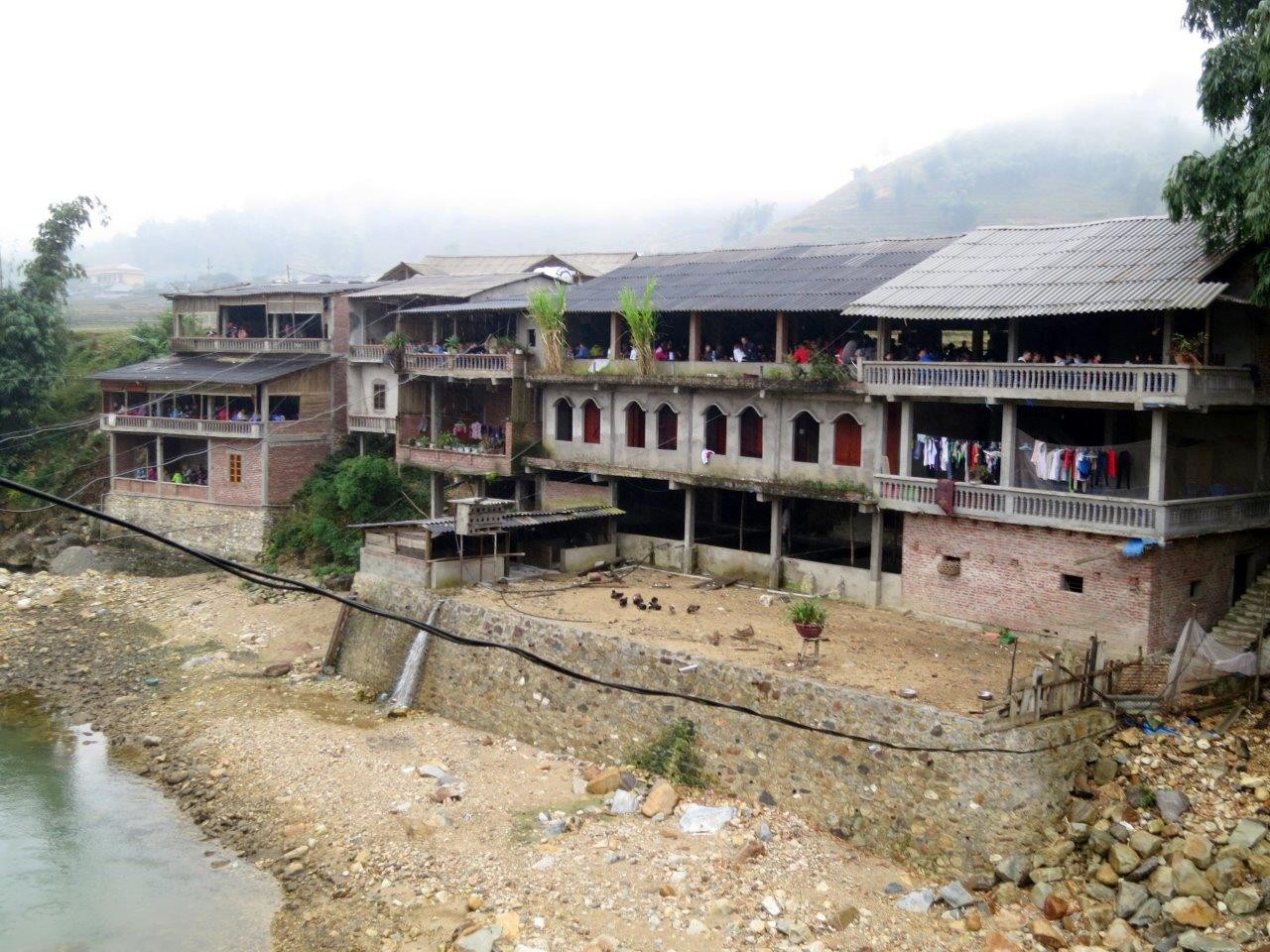 Lunch stop in Ta Van
Lunch stop in Ta Van
8.3.1. Preparation Process
The sticky rice is soaked in water, mixed with coconut milk and salt, and then stuffed into a bamboo tube. The tube is then roasted over a fire until the rice is cooked.
8.3.2. Unique Taste
The bamboo tube imparts a unique and smoky flavor to the rice, making it a delicious and satisfying snack.
9. What Are Some Tips for Responsible Tourism in Ta Van Village?
Responsible tourism in Ta Van Village involves respecting the local culture, supporting the local economy, and minimizing your environmental impact. According to sustainable tourism guidelines, it’s essential to be mindful of your actions and make choices that benefit the local communities and preserve the natural environment. Practicing responsible tourism will ensure that Ta Van remains a vibrant and sustainable destination for future generations.
9.1. Respecting Local Culture
Respecting local culture is essential for responsible tourism in Ta Van.
9.1.1. Dress Code
Dress modestly when visiting religious sites or interacting with local people. Avoid wearing revealing clothing or anything that might be considered disrespectful.
9.1.2. Photography
Ask for permission before taking photos of people, and be respectful of their customs and traditions. Avoid taking photos of sensitive subjects, such as religious ceremonies or private homes, without permission.
9.2. Supporting Local Economy
Supporting the local economy is a key aspect of responsible tourism.
9.2.1. Buying Local Products
Buy local products and souvenirs from local artisans and vendors. This helps support their livelihoods and preserve their traditional crafts.
9.2.2. Eating at Local Restaurants
Eat at local restaurants and try local cuisine. This supports local businesses and provides an opportunity to experience the unique flavors of Ta Van.
9.3. Minimizing Environmental Impact
Minimizing your environmental impact is crucial for preserving the natural beauty of Ta Van.
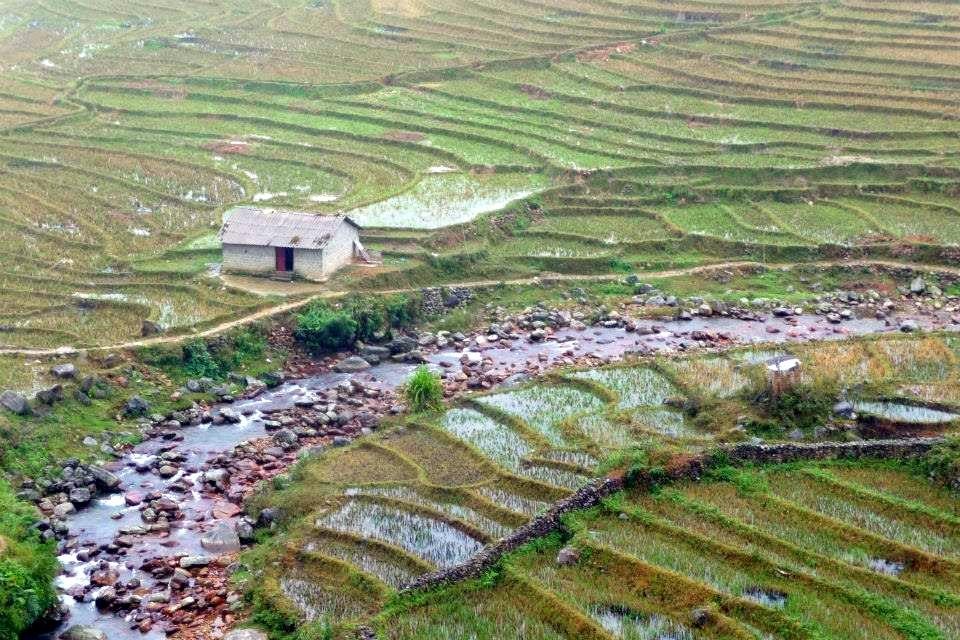 Landscape in Ta Van
Landscape in Ta Van
9.3.1. Reducing Waste
Reduce waste by bringing your own reusable water bottle, shopping bag, and utensils. Avoid using single-use plastics whenever possible.
9.3.2. Conserving Resources
Conserve resources such as water and energy. Turn off lights and appliances when not in use, and avoid wasting water.
10. How Can SIXT.VN Enhance Your Trip to Ta Van Village?
SIXT.VN can significantly enhance your trip to Ta Van Village by providing seamless travel solutions, ensuring a comfortable and stress-free experience. From arranging convenient airport transfers to booking comfortable accommodations, SIXT.VN takes care of all your travel needs, allowing you to focus on enjoying the beauty and culture of Sapa. With SIXT.VN, you can rest assured that your trip to Ta Van will be unforgettable.
10.1. Airport Transfers
SIXT.VN offers reliable airport transfer services, ensuring a smooth and hassle-free journey from the airport to Sapa.
10.1.1. Convenient Pick-Up
SIXT.VN provides convenient pick-up services at major airports, such as Noi Bai International Airport in Hanoi.
10.1.2. Comfortable Vehicles
SIXT.VN offers a range of comfortable vehicles to suit different group sizes and preferences.
10.2. Accommodation Booking
SIXT.VN can help you find and book the perfect accommodation in Sapa, whether you prefer a traditional homestay or a luxury hotel.
10.2.1. Wide Range of Options
SIXT.VN offers a wide range of accommodation options, from budget-friendly guesthouses to luxury resorts.
10.2.2. Best Prices
SIXT.VN provides competitive prices and exclusive deals, ensuring you get the best value for your money.
10.3. Tour Packages
SIXT.VN offers customized tour packages that include transportation, accommodation, and guided tours of Ta Van and other attractions in Sapa.
10.3.1. Tailored Itineraries
SIXT.VN can tailor itineraries to suit your interests and preferences, ensuring you have a personalized and unforgettable experience.
10.3.2. Knowledgeable Guides
SIXT.VN partners with knowledgeable local guides who can provide insights into the culture, history, and natural beauty of Sapa.
Ready to explore the enchanting Ta Van Village? Let SIXT.VN take care of all your travel needs! From seamless airport transfers and comfortable hotel bookings to expertly guided tours, we ensure a stress-free and unforgettable experience. Contact us today to plan your perfect Sapa adventure!
Address: 260 Cau Giay, Hanoi, Vietnam
Hotline/Whatsapp: +84 986 244 358
Website: SIXT.VN
FAQ Section: Discovering Ta Van Village
1. What is the best time to visit Ta Van Village?
The best times to visit Ta Van Village are during the spring (March to May) and autumn (September to November) for pleasant weather and stunning landscapes.
2. Which ethnic groups live in Ta Van Village?
Ta Van Village is primarily inhabited by the Giay, Hmong, and Red Dao ethnic groups.
3. What activities can I do in Ta Van Village?
You can enjoy trekking, cultural immersion, photography, and relaxation activities in Ta Van Village.
4. How do I get from Sapa town to Ta Van Village?
You can get to Ta Van Village from Sapa by renting a motorbike, taking a taxi or private car, or joining a guided trekking tour.
5. What should I pack for a trip to Ta Van Village?
Pack layers of clothing, sturdy footwear, rain gear, and insect repellent for a trip to Ta Van Village.
6. What kind of accommodation options are available in Ta Van Village?
Accommodation options in Ta Van Village include homestays, eco-lodges, and hotels in Sapa town.
7. What local cuisine should I try in Ta Van Village?
Try thang co (horse meat stew), black chicken, and bamboo sticky rice when visiting Ta Van Village.
8. What are some tips for responsible tourism in Ta Van Village?
Respect local culture, support the local economy, and minimize your environmental impact to practice responsible tourism in Ta Van Village.
9. How can SIXT.VN enhance my trip to Ta Van Village?
SIXT.VN enhances your trip by providing airport transfers, accommodation booking, and customized tour packages.
10. Is it safe to trek in Ta Van Village without a guide?
While it is possible to trek in Ta Van Village without a guide, it’s recommended to hire one, especially for inexperienced hikers, to ensure safety and gain insights into the local culture.



